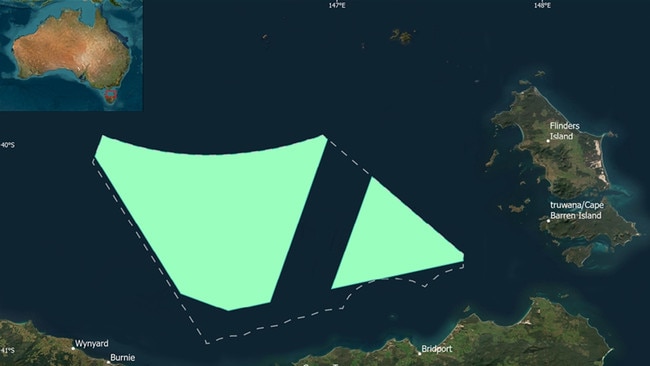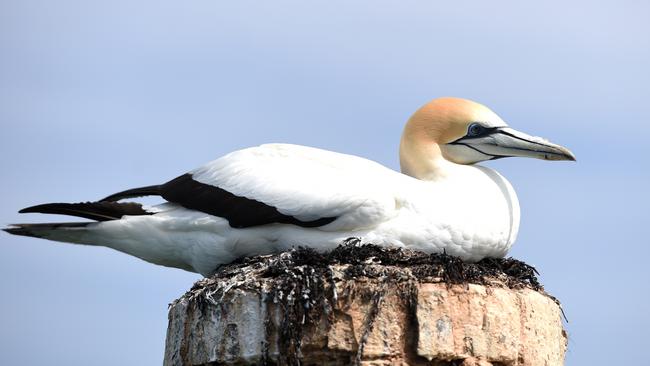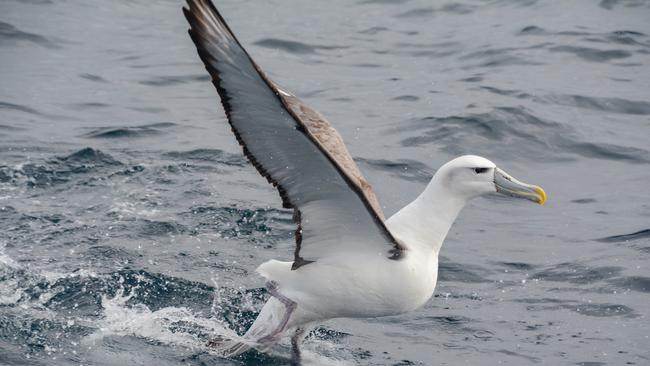Bass Strait offshore wind zone an ‘energy boon’ but wildlife worry
It could meet half the demand for power across southeast Australia, but a vast new offshore wind zone has raised fears for an array of bird species and whales.

A newly declared Bass Strait offshore wind zone could have major impacts on key migratory and marine bird species unless safeguards are improved, bird experts and conservationists warn.
Climate Change and Energy Minister Chris Bowen on Thursday “declared” the 7100sq km turbine zone, 30km off Tasmania’s northern coast, saying it could generate 20 gigawatts of power – more than half of the existing demand across southeast Australia.
However, bird experts warned that, especially when combined with two other offshore wind zones in Tasmanian and Victorian waters, it could significantly affect migratory shore and woodland birds, as well as albatross.
Although the zone at least partly avoids documented migratory bird routes along Tasmania’s far northeast and northwest extremities, ornithologist Eric Woehler warned little was known about the more central route, in the zone’s path.
“We have far less information around the species of birds and the numbers involved that simply depart anywhere along the north coast of Tasmania to cross Bass Strait,” Dr Woehler said.
“Bass Strait is a north-south corridor for migratory woodland birds, and shorebirds, and potentially an east-west corridor for seabirds that are tracking through, and there are whales.
“If we get this wrong … it may be green energy but it will come with a dark tinge. We need to make sure the renewable energy push doesn’t come at a cost to biodiversity.”

Bird experts and conservationists are demanding better assessment of cumulative impacts of multiple offshore wind farms and zones, longer bird movement studies and strict monitoring, with rapid adaptive changes.
The Bob Brown Foundation warned whales and other sea creatures could also be affected if developers were allowed to drive piles into the sea floor, while backing concerns about birds.
“The Bass Strait supports significant numbers of seabirds, particularly shy albatross and Australasian gannets,” BBF marine campaigner Alistair Allan said.
“It is also one of the most crowded flyways for migratory birds on Earth, including many species of parrots, hawks, martins and cuckoos that summer in Tasmania and winter on mainland Australia. But the impact of this proposal on those multiple species is completely unknown.”
While backing the renewables transition, the BBF was also concerned about “giving away” a vast area of “public waters” to developers before “adequate environmental regulations” were in place.
As well, Mr Allan said developers, not taxpayers, should pay for infrastructure such as cables to transmit the power.
Developers have until March 12, 2025, to apply for licences to assess the feasibility of projects in the zone.

In a joint statement with the Tasmanian Liberal government, Mr Bowen said these licences would be awarded based on addressing environmental, workforce and energy security issues.
“Developers must … adhere to stringent requirements for environmental stewardship and community involvement and commit to sharing the marine space with existing users,” the statement said.
Mr Bowen said the Bass Strait wind resource was “truly world-class”, with sustained wind speeds of more than 8 metres per second.
“Harnessing this power and capitalising on Tasmania’s highly skilled workforce with decades of experience in engineering, logistics and infrastructure can provide energy security for Australian homes and businesses,” he said.
It would “future proof existing industry and power new green energy industries” and provide up to 12,000 jobs in construction and 6000 ongoing roles.
The zone had been shrunk by 30 per cent from an earlier proposal, with a carve-out for shipping.
Tasmania’s Labor opposition backed the zone but warned it was “at risk if Peter Dutton gets his way with nuclear energy”.






To join the conversation, please log in. Don't have an account? Register
Join the conversation, you are commenting as Logout